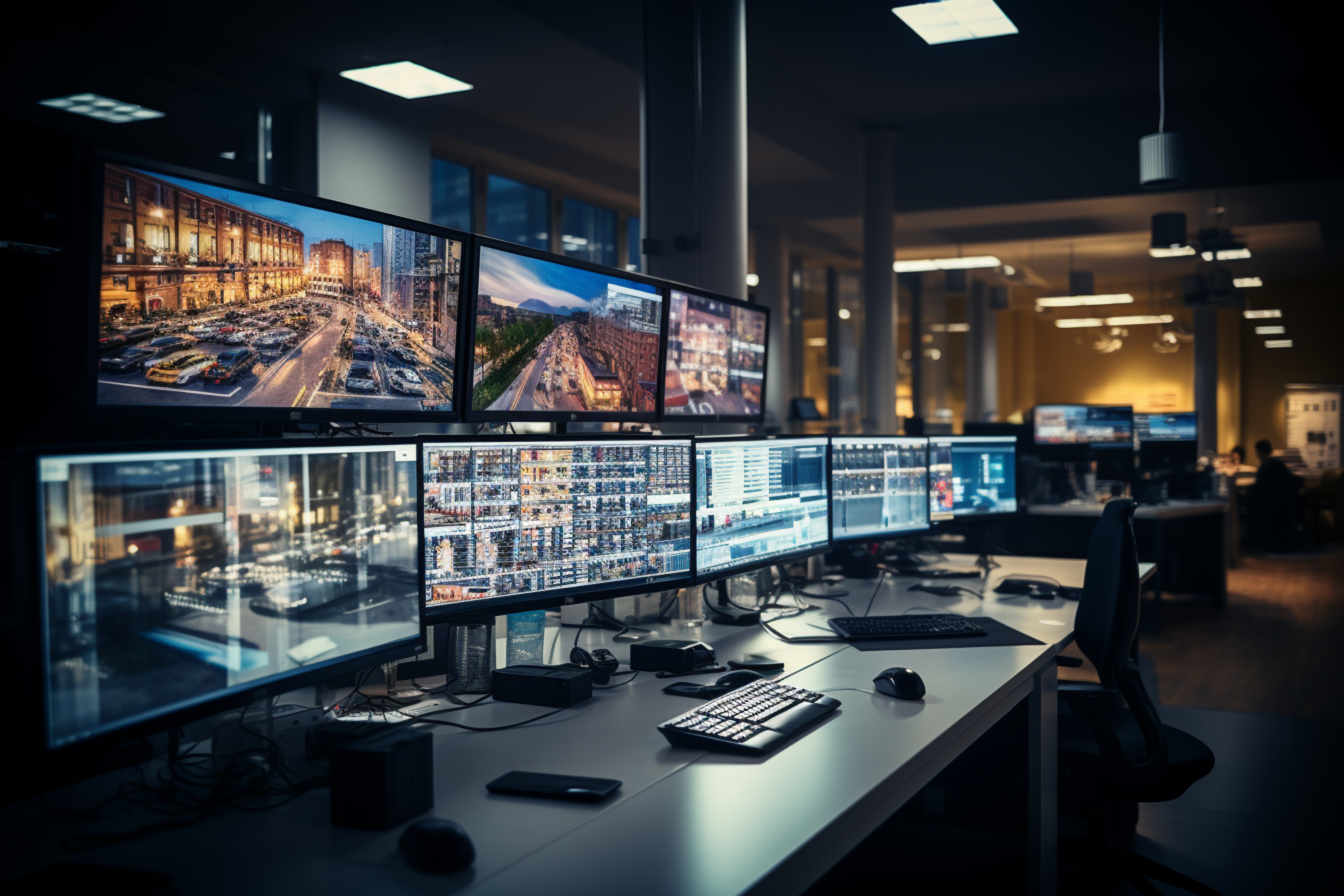
Effective presentations and seamless collaboration are crucial for productive meetings, and the right display solutions can significantly improve these aspects in a conference room setting. Whether it’s a small meeting space or a large corporate boardroom, choosing the right display technology can elevate communication, make presentations more engaging, and streamline teamwork.
This guide will explore various conference room display solutions and provide insights into how they can be implemented to suit different types of meeting spaces. We’ll cover the most popular presentation solutions, their benefits, and tips for selecting the best option for your conference room needs.
Why Are Display Solutions Important for Conference Rooms?
In any business setting, meetings and presentations are a common part of daily operations. Whether you’re pitching new ideas, discussing performance metrics, or collaborating with remote teams, clear and efficient communication is essential. The right display technology facilitates this by:
Improving visual clarity: Presenting high-quality images, data, and videos for everyone in the room to see clearly.
Encouraging collaboration: Interactive displays allow multiple team members to contribute and make changes in real-time.
Streamlining remote communication: Connecting remote employees to meetings and presentations with ease.
Enhancing professionalism: High-quality displays provide a polished, professional look, reinforcing a positive company image.

Key Considerations When Choosing a Conference Room Display Solution
Before diving into specific solutions, it’s essential to evaluate your conference room’s unique needs and constraints. Consider the following factors when selecting the right display:
Room size: The size of the display should be proportionate to the size of the conference room to ensure everyone can see the content clearly.
Purpose of use: Will the display be used primarily for presentations, video conferencing, or collaborative brainstorming sessions?
Connectivity: Ensure the solution supports multiple input devices such as laptops, tablets, and smartphones. Wireless solutions are often preferred for ease of use.
Resolution and clarity: Higher resolution displays (4K or Full HD) are ideal for detailed presentations or when using visual-heavy content.
Budget: Display solutions come in a wide range of prices, so it’s crucial to choose a solution that meets your requirements while staying within budget.

Top Display Solutions for Conference Rooms
There are various display options available for conference rooms, each suited to different needs. Below, we explore the most common conference room display solutions and how they can benefit your business.
1. Flat-Panel Displays
Flat-panel displays, such as LED, OLED, and LCD screens, are among the most popular and cost-effective solutions for conference rooms. They are suitable for small to medium-sized rooms and can range in size from 40 to 90 inches or more.
Advantages:
Excellent image quality with high resolutions (up to 4K or 8K).
Slim design, making them easy to mount on walls.
Affordable and widely available.
Easy integration with laptops, media players, and wireless presentation systems.
Best For:
Standard presentations, video playback, and image-heavy presentations.
Smaller meeting spaces where everyone can easily see the display.
Considerations:
In larger rooms, multiple displays or a larger screen size may be required for visibility.
2. Interactive Whiteboards
Interactive whiteboards, like the Microsoft Surface Hub or Google Jamboard, offer a more collaborative approach to meetings. These touchscreen displays allow multiple participants to interact with content by writing, drawing, or editing documents directly on the screen.
Advantages:
Facilitates real-time collaboration, allowing participants to engage directly with the content.
Ideal for brainstorming sessions, drawing diagrams, or annotating documents.
Integrates with video conferencing tools for remote collaboration.
Touchscreen technology makes presentations dynamic and engaging.
Best For:
Collaborative meetings where team members need to actively engage with the content.
Brainstorming sessions and interactive presentations.
Considerations:
Can be expensive compared to standard flat-panel displays.
May not be necessary if your meetings are more presentation-focused and less interactive.
3. Projection Systems
Projectors are a classic choice for larger conference rooms, where flat-panel displays might not be large enough to be seen by everyone. Modern projectors can deliver high-quality visuals, even in brightly lit rooms, and offer flexible screen sizes that can be adjusted according to the space.
Advantages:
Can project very large images, making them ideal for large meeting rooms or auditoriums.
High-end models support 4K resolution and deliver excellent image quality.
Portable options are available, allowing flexibility in meeting locations.
Suitable for presentations, video conferencing, and multi-purpose uses.
Best For:
Large conference rooms or spaces where a flat-panel display may not be large enough.
When screen size flexibility is a priority.
Considerations:
Requires more setup than flat-panel displays, including mounting, cabling, and regular maintenance.
Ambient light can affect image clarity, so projectors may need a dimmed room for optimal viewing.
4. Video Walls
For businesses that want to make an impression, video walls provide a stunning visual experience. Video walls are made up of multiple displays tiled together to create one large screen. This solution is particularly effective for large conference rooms, lecture halls, or executive boardrooms.
Advantages:
Delivers an impressive and immersive viewing experience.
Allows for custom screen layouts, displaying multiple content sources simultaneously.
Ideal for high-profile presentations, corporate meetings, or digital signage.
Best For:
Large spaces where you need an expansive, impactful display.
Companies that want to display multiple feeds (e.g., video conferencing, presentations, data).
Considerations:
Very expensive compared to other options.
Requires professional installation and ongoing maintenance.
5. Wireless Presentation Systems
Wireless presentation systems like Barco ClickShare or Mersive Solstice eliminate the need for physical connections between the display and the presenting device. They allow team members to wirelessly share their screens with the main display, making meetings more fluid and reducing setup time.
Advantages:
Supports multiple devices without the need for cables.
Easy to switch between presenters or content sources.
Reduces clutter and improves aesthetics in the conference room.
Works with a wide range of devices, including laptops, tablets, and smartphones.
Best For:
Rooms where multiple participants may need to present or share content quickly.
Modern offices seeking a streamlined, cable-free setup.
Considerations:
The main display still needs to be compatible with wireless presentation systems.
It may require additional hardware depending on the brand and devices being used.
Video Conferencing and Audio Solutions
In today’s world, many meetings include remote participants, making video conferencing an essential part of the conference room setup. The integration of audio and video conferencing solutions with your display technology is crucial for maintaining clear communication across distributed teams.
Webcams or conference cameras with wide-angle lenses should be paired with displays for clear, high-definition video.
Microphones and speakers are equally important for ensuring all participants can be heard clearly. Choose ceiling or table microphones for better sound pickup.
Many display solutions, such as interactive whiteboards and flat-panel displays, come with integrated video conferencing software, including platforms like Zoom, Microsoft Teams, or Google Meet.

Choosing the Right Solution for Your Conference Room
Selecting the right conference room presentation solutions depends on the size of the room, the nature of your meetings, and your overall budget. Here are a few tips to help you choose:
Small Meeting Rooms: A flat-panel display or interactive whiteboard paired with a wireless presentation system is perfect for smaller spaces.
Medium-Sized Rooms: Combine flat-panel displays with wireless presentation solutions or an interactive whiteboard for more dynamic meetings.
Large Rooms: For larger spaces, projectors or video walls provide the screen size necessary for everyone to see, and video conferencing tools ensure remote participants are included.
Multi-Use Rooms: Opt for flexible solutions like portable projectors or interactive displays that can cater to various meeting types and room setups.
Conclusion
Choosing the best conference room display solutions depends on your unique requirements. Whether you need a simple flat-panel display for presentations or an interactive whiteboard for collaborative meetings, the right solution can enhance productivity and communication. Remember to consider factors like room size, budget, and the level of interaction needed when making your decision. With the proper setup, your conference room will be equipped to handle all your presentation and collaboration needs, fostering a more efficient and engaging meeting environment.